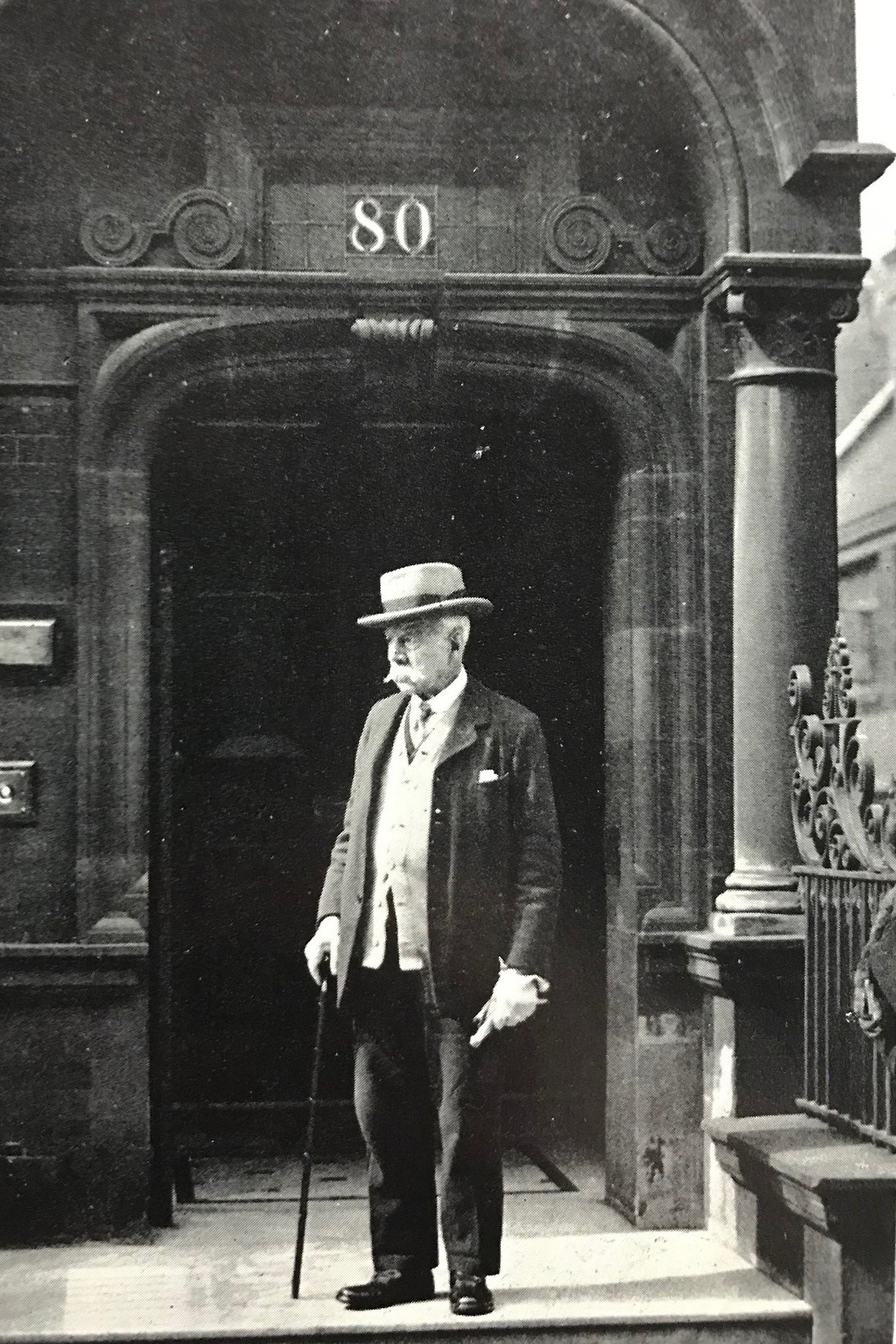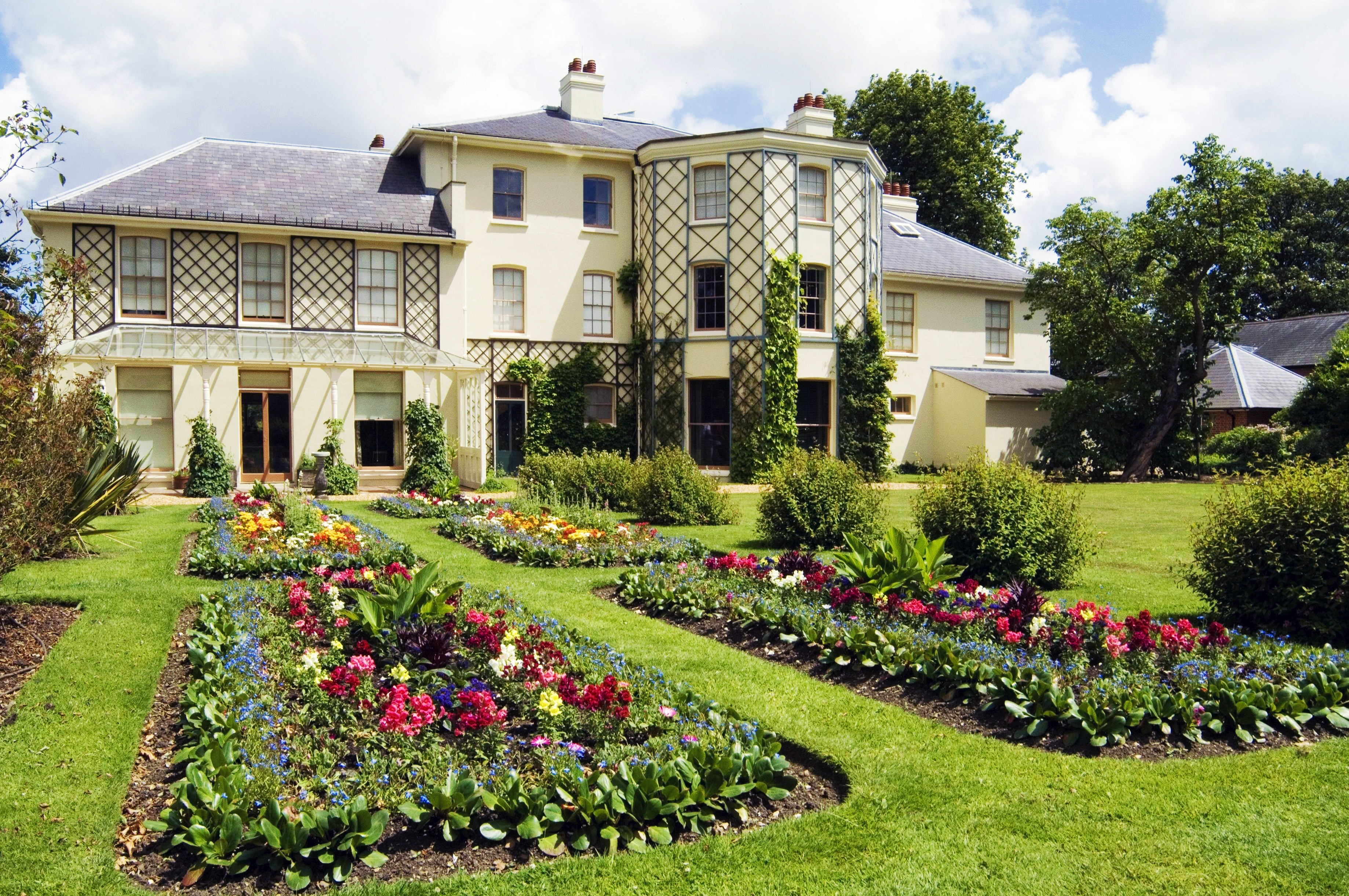Sir George Buckston Browne
A link between Victorian & modern urology
George Buckston Browne (1850 - 1945) was born on 13 April 1850 in Manchester, England, the fifth generation of a medical and very religious family. He began studying medicine at University College, London in 1868 and won medals in chemistry, anatomy and midwifery as well as the gold medal in practical chemistry and the Liston Gold Medal for surgery.
Images of Buckston Browne through the years
Click on an individual image for a full-screen version (opens in a new browser window):
Browne passed his part one examination as Fellow of the Royal College of Surgeons (FRCS) in 1872, but, when he sat the MB ChB examination in 1872, he failed the chemistry paper (the subject in which he had previously won the gold medal!). Rather than re-sit the year to retake the examinination, he made the career-changing decision just to take the degree of Member of the Royal College of Surgeons (MRCS) for which he qualified in 1874. He did not gain his Bachelor of Medicine degree, nor later his full FRCS.
Unfortunately, no one without a London MB could expect a hospital appointment in the future. Nevertheless, he "won" the position of house surgeon to Sir John Eric Erichsen (1818 – 1896) at University College Hospital - the job interview was a three-day competition. He was subsequently made prosector to George Viner Ellis (1812 – 1900), the Professor of Anatomy for £4 a month.
It was in this capacity at University College Hospital that he met Sir Henry Thompson (1820 – 1904) and, by quick thinking and hard work, saved the life of one of Thompson’s patients. Thompson was a renowned Victorian surgeon with a particular interest in urology. A year later, in 1874, when Browne was working as an anatomy demonstrator, Thompson walked into his dissecting room and asked him to be his assistant in his huge London private practice. Giving him 24 hours to think it over, he invited him to give his answer at dinner at Thompson’s Wimpole Street house the next day (Christmas Eve!). Buckston Browne agreed and was paid £200 a year and allowed to take on his own private patients.
He continued to study for his FRCS but, when he took the examination, he was failed by Mr John Marshall (1818 – 1891), who said he had tied off a vein and not the brachial artery as instructed. Marshall was Professor of Surgery at University College Hospital - he was also Professor of Anatomy at the Royal Academy of Art - and later became President of the Royal College of Surgeons of England. According to Browne, Marshall hated Sir Henry Thompson and was jealous of his knighthood. Browne was convinced this was the reason he was failed and never entered the College again until he retired. This was another blow to his career prospects, and now he had no chance of a London hospital position.
Browne assisted Thompson in his busy practice and cared for his patients when he was away on his long summer holidays or if he was unwell. Despite bringing in thousands of pounds for Thompson in these periods he was not given a single penny over his salary, but he did learn much from Thompson, in particular his skill at passing urethral instruments such as the blind lithotrite. Browne was present at every operation performed while he remained his assistant.
 Browne also had the opportunity to meet all the great medical men of the day and came to know most of the doctors in London. This was a great help when, after 14 years working for Thompson, he resigned and began to work alone in private practice at 80 Wimpole Street (pictured right). From 1889, he worked unceasingly at his practice, seeing patients from morning to evening and caring for "inpatients" in various rented rooms around Wimpole Street, all of which he personally unlocked and locked every morning and evening. He never had a secretary, writing all letters personally and did not take a holiday for 35 years.
Browne also had the opportunity to meet all the great medical men of the day and came to know most of the doctors in London. This was a great help when, after 14 years working for Thompson, he resigned and began to work alone in private practice at 80 Wimpole Street (pictured right). From 1889, he worked unceasingly at his practice, seeing patients from morning to evening and caring for "inpatients" in various rented rooms around Wimpole Street, all of which he personally unlocked and locked every morning and evening. He never had a secretary, writing all letters personally and did not take a holiday for 35 years.
He was not only an expert with the lithotrite, but probably one of the most skilled at passing a catheter. He used the old way of catheterising men standing and had a "stall" in his rooms with arm rests for the men to stand in. He probably introduced the open suprapubic approach to excision of bladder tumours, although Thompson wrote the book on it, and he published many papers on urological conditions.
Amazingly, for a man without a London hospital position and without an MB or FRCS he amassed a huge practice and fortune. In later life, much of this fortune he generously donated to a multitude of medical causes.
In 1919, Browne’s only son Lieutenant Colonel George Buckston Browne (1876 – 1919) died of pneumonia, his grandson, George Buckston Browne the sixth (1903 – 1924), died five years later,of typhoid, and his beloved wife Helen, née Vaine (1848 – 1926) passed away in 1926. He was devastated but continued to work hard, this, he said, being a “mild anaesthetic” to his sadness.
With no male heir to carry on the medical tradition -his daughter married Sir Hugh Lett, a urologist at the London Hospital and president of the RSM Urology Section in 1932 - he wanted to make good use of his money. Already a generous benefactor of the Royal College of Surgeons, he offered £5000 in 1927 to support an annual dinner (to include wine and cigars) for 100 guests, at least half of whom had to be MRCSs. He endowed a medal in memory of his son, to the Harveian Society and, later, a dinner. He was made a Hunterian Trustee and was awarded the Gold Medal of the Royal College of Surgeons of England. On 15 April 1926 he was finally made FRCS by election of the council ,54 years after passing his FRCS Part I!
 Buckston Browne was always a great admirer of Charles Darwin (1809-1882) and when, in 1927, he heard that Darwin’s former home in Kent, Down House, was for sale and in danger of deterioration after it had been used as a girls’ school, he bought it so it could be preserved as a national memorial to Darwin. He paid £4,250, giving another £10,000 for its restoration and a further £20,000 for upkeep.
Buckston Browne was always a great admirer of Charles Darwin (1809-1882) and when, in 1927, he heard that Darwin’s former home in Kent, Down House, was for sale and in danger of deterioration after it had been used as a girls’ school, he bought it so it could be preserved as a national memorial to Darwin. He paid £4,250, giving another £10,000 for its restoration and a further £20,000 for upkeep.
Read more about Down House
In 1931, very keen to support the Royal College of Surgeons and maintain a link with research to Darwin’s old home, he donated a further £100,000 to build a medical research centre, the Buckston Browne Research Farm for the College, adjacent to Down House. Partly in recognition for these efforts, He was knighted in 1932, afterwards dropping the name George and preferring to be called Sir Buckston Browne.
Throughout the London blitz - apart from a short sojourn in his late wife’s cottage in Sparsholt - he insisted on remaining at his home in Wimpole Street and survived unscathed. However, on 11 January 1945, he fell and fractured his neck of femur. He was carried to his old hospital, University College Hospital, where he died eight days later.
With grateful thanks to Prof Dirk Schultheiss for his help with this Museum item
← Back to Famous Clinicians Room